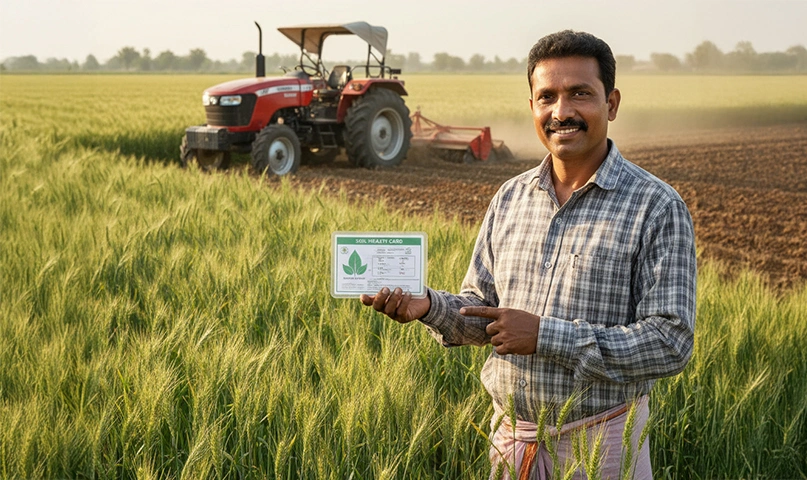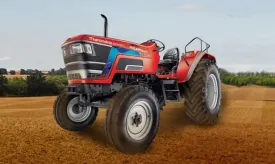RKVY-RAFTAAR: A Complete Guide to Rashtriya Krishi Vikas Yojana

Agriculture remains central to India’s economy. It provides livelihood for a large section of the population, ensures food security, and feeds into allied industries. Yet, farming in India faces many structural challenges: fragmentation of landholdings, lack of adequate infrastructure (pre- and post-harvest), inefficient value chains, limited adoption of modern technology, and exposure to risk.
To address many of these, the Government of India launched Rashtriya Krishi Vikas Yojana (RKVY) in 2007. Later in 2017, RKVY was revamped and rebranded as RKVY-RAFTAAR (“Remunerative Approaches for Agriculture and Allied Sector Rejuvenation”) with enhanced focus on agri-entrepreneurship, risk mitigation, infrastructure, and making farming more profitable.
This guide walks you through what RKVY-RAFTAAR is, its objectives, components/streams, eligibility, how it works, benefits for farmers and states, challenges, and what the future might hold.
Objectives of RKVY-RAFTAAR

RKVY-RAFTAAR has multiple interlocking objectives, meant to improve agricultural growth, farmer incomes, resilience, and innovation. Key objectives include:
- Make farming remunerative: By strengthening farmers’ efforts, reducing risk, supporting value addition, and ensuring that agricultural activity yields better returns.
- Infrastructure development: Creation of pre- and post-harvest infrastructure – storage, processing, marketing, etc. so that farmers can access quality inputs, reduce loss, and better market their produce.
- Flexibility to States: Give states autonomy to plan and execute projects according to local agro-climatic, social, and economic conditions. States create State Agriculture Plans (SAPs) and District Agriculture Plans (DAPs).
- Value chain and agribusiness: Promote end-to-end models that include production, processing, grading, packaging, marketing etc., often via public-private partnerships.
- Risk mitigation & income diversification: Encourage alternative/agro allied activities like apiculture, floriculture, integrated farming etc., to reduce dependence on single crops and spread risk.
- Encourage innovation & entrepreneurship: Supporting agripreneurs, incubators, agri-startups, and innovation centers to bring new technologies, processes, and business models to agriculture.
- National priorities & inclusiveness: Address priorities such as micro-irrigation, post-harvest management, promotion of weaker sections (SC/ST, women), regions with rainfed or drought-prone agriculture.
Read Also: 10 Key Government Schemes for Indian Agriculture Farmer in 2025
Key Features & Principles
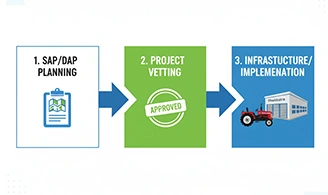
To implement these objectives, RKVY-RAFTAAR adopts certain features and guiding principles:
- Streams (Funding categories): The scheme is structured in different streams (Regular RKVY, Special Sub-Schemes, Innovation & Agri-entrepreneur development) to channel funds appropriately.
- Funding patterns: For most states, funding is shared 60% by the Central Government and 40% by State Governments. In the case of North Eastern States and Himalayan/Hilly States, the sharing pattern is 90:10. Union Territories often receive central funding fully.
- Flexibility: States have flexibility in selecting project proposals, subject to conformity with national guidelines and alignment with SAP/DAP. This allows them to address local needs.
- Project-based scheme: Projects under RKVY-RAFTAAR are proposal/DPR based, with screening, vetting, sanctioning processes. States have State Level Project Screening Committees (SLPSC) and State Level Sanctioning Committees (SLSC) to evaluate and approve projects.
- Monitoring & Evaluation: Emphasis on physical/financial tracking, verifiable indicators, and ensuring that projects deliver intended outcomes for farmers.
Components / Streams under RKVY-RAFTAAR

RKVY-RAFTAAR’s funding is divided into major streams to ensure balanced development. Key streams include:
1. Regular RKVY-RAFTAAR (about 70% of the annual outlay)
- Infrastructure & Assets (pre- and post-harvest): Enabling things like better storage, cold chain, market facilities, mechanization, seeds, nurseries etc. Pre-harvest infrastructure may include irrigation, quality seeds etc., post-harvest includes storage, processing, grading etc.
- Value Addition-Linked Production Projects: Projects which integrate production with processing, marketing to provide additional assured income. Includes Agribusiness Models, PPPs, etc.
- Flexi Funds: Around 20% under the Regular component is for state specific, innovative, locally required projects. Allows states to respond to unique local challenges.
2. Special Sub-Schemes (about 20% of annual outlay)
- Based on national priorities notified by the central government (e.g. drought prone areas, micro-irrigation, post-harvest loss reduction, agro forestry etc.). These schemes are meant to focus attention on priorities and problem areas.
3. Innovation & Agri-Entrepreneur Development (10% of annual outlay)
- This central stream promotes incubation centers, agripreneurs, skill development, startups etc. Enhances innovation ecosystem in agriculture.
4. Farmer Producer Organizations (FPOs) Support
- Under the value chain and agribusiness streams, FPOs are encouraged and subsidized. Support includes creating or strengthening FPOs, improving market linkages, aggregation etc.
Eligibility, Funding & Allocation
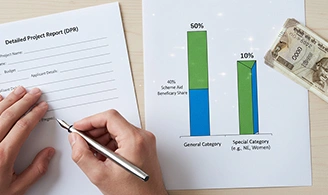
Who is Eligible?
- States and Union Territories are the primary implementing entities; they prepare annual plans under RKVY-RAFTAAR.
- Implementing agencies under state governments, departments of agriculture, allied sectors, private entities under PPP / SFAC etc. may propose projects. Funding & Cost Sharing
- As noted, funding share is 60:40 (Centre: State) for most states. Northern/Himalayan/NE states: 90:10. UTs may receive full central assistance.
- States must prepare State Agriculture Plans (SAP), District Agriculture Plans (DAP), and identify priority projects. Funds are released in instalments.
Project Approval, Screening & Monitoring

- Projects must be submitted as Detailed Project Reports (DPRs), which include objectives, beneficiaries, costs, timelines etc.
- Screening happens first at State Level Project Screening Committee (SLPSC), then final approval by State Level Sanctioning Committee (SLSC).
- Monitoring includes financial & physical reporting, outcome metrics, evaluation. Social inclusion (SC/ST/women) is also mandated.
Benefits and Impact
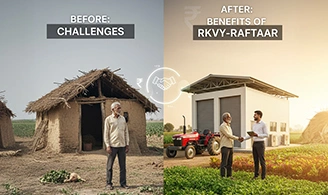
RKVY-RAFTAAR is designed to yield multiple benefits, both for farmers and states. Some of the key benefits and impacts include:
For Farmers
- Better infrastructure reduces post-harvest loss and improves quality of produce.
- Improved access to markets and value chains helps fetch better prices.
- Diversification options (horticulture, allied sectors) reduce dependence on single crops and risk.
- Support for agripreneurs means new opportunities—startups, processing units, etc.
- Support for innovation leads to better farming practices, improved inputs.
For Agriculture & Allied Sectors
- Increased investment in agriculture gets catalyzed via incentive structure.
- Encouragement of modern technologies, cold chains, storage, value addition etc., improves overall productivity & competitiveness.
For States
- Flexibility allows states to address local challenges – droughts, terrain, crop patterns etc.
- Autonomy leads to better alignment of resources and priorities.
- Enhanced capacity building through incubators and agri-entrepreneur support.
Also Read: Types of farming in India – Factors, Techniques & Importance
How RKVY-RAFTAAR Works: Key Processes
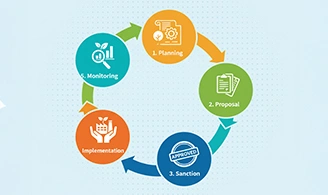
To understand how the scheme functions in practice:
1. Planning
- States prepare SAPs and DAPs, identifying priority sectors and projects.
- States also prepare a shelf of projects (SAIDP – State Agriculture Infrastructure Development Program) from which projects are picked.
2. Project Proposals and DPRs
- Proposals are prepared by state departments, agencies, or implementing partners. Must include justification, timeline, expected outcomes, cost norms.
3. Screening & Sanction
- SLPSC reviews the proposal for alignment with SAP/DAP, no duplication, correct norms.
- SLSC gives final approval. Big projects (e.g. over Rs.25 crore) may need third-party techno-financial evaluation.
4. Implementation
- Once sanctioned, funds are released. States or implementing agencies carry out the work—building infrastructure, setting up incubators, supporting entrepreneurs etc.
5. Monitoring & Evaluation
- Physical & financial progress tracked.
- Periodic reviews, evaluation studies.
- Inclusion of vulnerable groups ensured.
Real-World Examples / Activities
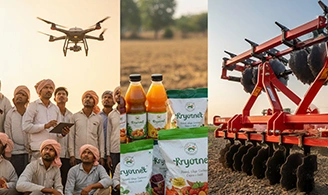
While exact projects change from year to year, some illustrative kinds of projects supported under RKVY-RAFTAAR include:
- Infrastructure for cold storage, food processing units.
- Value addition chain for millets/horticulture (e.g. mills, dehydration, packaging).
- Mechanization and supply of farm equipment.
- Support for agripreneurs via incubators or innovation cells.
- Projects in rainfed / drought-prone areas for soil & water conservation.
Challenges and Limitations
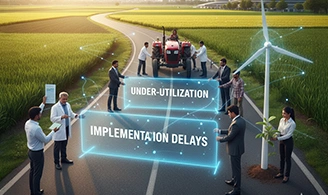
While RKVY-RAFTAAR has many strengths, there are also challenges:
- Implementation delays – Large projects may take longer due to land, clearances, coordination issues.
- Under-utilization of funds in some states – Some States may not have enough capacity or readiness to propose quality DPRs or implement projects.
- Duplication risk – Risk of overlapping or duplication with other agriculture/ally schemes if not carefully aligned.
- Benefit reaching marginal farmers – Need to ensure SC/ST, women, small/marginal farmers get full share of benefits.
- Sustainability – Infrastructure must be maintained; value chains must be market viable.
- Evaluation and impact measurement – Sometimes weak on tracking actual income increases or yield gains.
How Farmers / Stakeholders Can Make the Most of RKVY-RAFTAAR

For farmers, agro-entrepreneurs, state agencies, and other stakeholders, here are tips to maximize benefit from RKVY-RAFTAAR:
- Be aware of State Agriculture Plan / District Agriculture Plan so you know which kinds of projects are being prioritized.
- Participate via Farmer Producer Organizations (FPOs) to tap into value chain / aggregation benefits.
- Leverage incubation / agripreneurship support—if you have ideas (processing, digital agriculture, farm mechanization etc.), prepare a project proposal.
- Push for infrastructure closer to your area—cold storage, market linkages, mechanization.
- Engage with local Agriculture Department for schemes under the special sub-schemes.
For states:
- Prepare strong, well-researched DPRs with clear cost-benefit and inclusion of marginalized farmers.
- Ensure monitoring and accountability.
- Promote convergence with other central/state schemes to avoid duplication and maximize benefit.
- Build capacity (technical, managerial) for project implementation.
Recent Developments & Trends
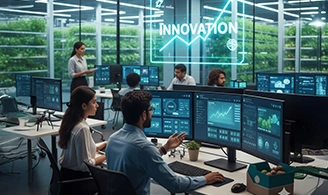
- The scheme continues to evolve with more focus on innovation, agripreneurship, and startups under R-ABI (RKVY Agri-Business Incubators).
- Greater attention to value chain development – not just producing crops but processing, grading, packaging, and marketing.
- Emphasis on inclusion – ensuring special focus on weaker regions and groups.
Explore more farming insights in our blogs section: Mahindra Tractors
Conclusion

RKVY-RAFTAAR is a powerful tool in India’s agricultural policy landscape. It moves beyond merely production to create a more remunerative, resilient, and innovative farming ecosystem. By enabling states to plan based on local needs, focusing on infrastructure, value addition, risk mitigation, and agripreneurship, the scheme aims to modernize agriculture and improve farm incomes.
Challenges remain—especially around implementation, ensuring equity, maintaining infrastructure, and measuring long-term impact—but the framework is robust and offers great potential. Farmers, state governments, agri-entrepreneurs, private sector players all have roles in making RKVY-RAFTAAR work for widespread agricultural growth.
India’s agriculture must not just survive but thrive; RKVY-RAFTAAR is one of the key schemes that can help it achieve sustainable prosperity.









